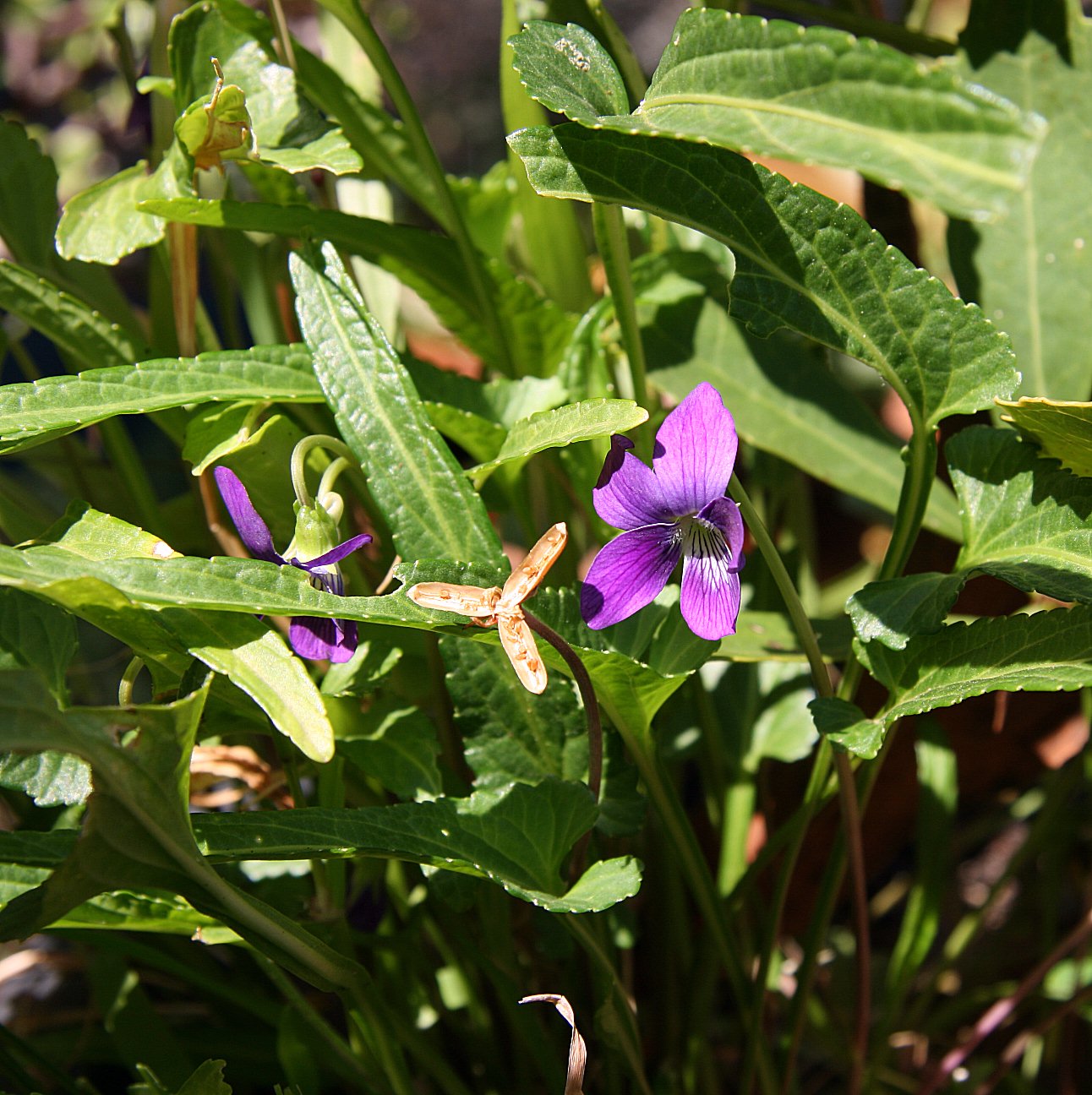- Viola betonicifolia
Taxobox
name = "Viola betonicifolia"

regnum =Plant ae
divisio = Magnoliophyta
classis = Magnoliopsida
ordo =Malpighiales
familia =Violaceae
genus = "Viola"
species = "V. betonicifolia"
binomial_authority = Sm.
binomial = "Viola betonicifolia""Viola betonicifolia", commonly known as the Arrowhead Violet, Showy Violet or Mountain Violet, is a small perennial herbaceous shrub of the "Viola", which contains pansies and violets. It occurs from India and Pakistan in southern Asia throughout eastern Australia and Tasmania. It grows in shaded habitat in forests.
Taxonomy
"Viola betonicifolia" was originally described by English botanist Sir
James Edward Smith in 1817.Description
This species is distinguished by long, slender arrow-shaped leaves grow from the base of the plant, which has no stem as such, and are up to 6 cm (2.4 in) long with a v-shaped sinus at the base, and are usually rather bright, fresh green. Its striking bright purple flowers are 1-1.5 cm in diameter and occur in spring and summer.cite book |author = Fairley A, Moore P |title=Native Plants of the Sydney District:An Identification Guide |year=2000 |edition= 2nd ed.|publisher=Kangaroo Press |pages=p. 84|location=Kenthurst, NSW |isbn=0-7318-1031-7] Flowers are followed by small pale brown pods with tiny blackish seeds.
Distribution and habitat
"Viola betonicifolia" is found in Tasmania and eastern mainland Australia from South Australia through Victoria and New South Wales, and into Queensland. It also occurs in Asia westwards to India and Pakistan. It grows in shady areas in forest.
Ecology
The caterpillars of the Laced or Indian Fritillary ("
Argynnis hyperbius ") feed upon this plant, [cite book |title=The Complete Field Guide to Butterflies of Australia |last=Braby |first=Michael F.|year=2005 |publisher=CSIRO Publishing |location=Collingwood, Victoria |isbn=0-643-09027-4 |pages=p. 180] and the flowers are pollinated by the Large- or Common Grass Yellow ("Eurema hecabe "). Coastal swamps where "Viola betonicifolia" grows have been drained in New South Wales, endangering the status of the Laced fritillary in that state. [ [http://www.environment.nsw.gov.au/determinations/LacedFritillaryEndSpListing.htm] ]Cultivation
"Viola betonicifolia" is an easy plant to grow, and adaptable to different soil types as long as it get sufficient moisture and at least half shade or more in a garden situation. It is good for rockeries. It can be quite vigorous in heavier, moisture retentive soils and forms clumps to about 30 cm (12 in) diameter. It is self-seeding. [cite book |title=Australian Native Plants for Rockeries and Ground cover |last=Hutchison |first=Frances|year= |publisher=Reed |location=Frenchs Forest, New South Wales |isbn=0-7301-0099-5 |pages=pp. 97-98]
References
External links
*APNI | name = Viola betonicifolia | id = 39700
Wikimedia Foundation. 2010.
